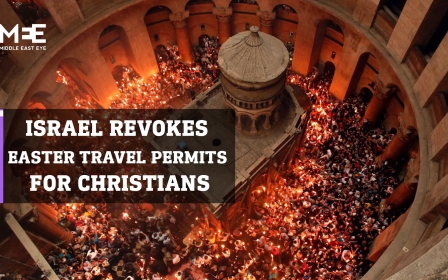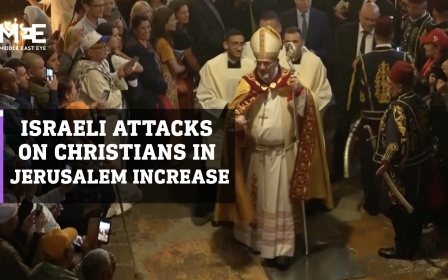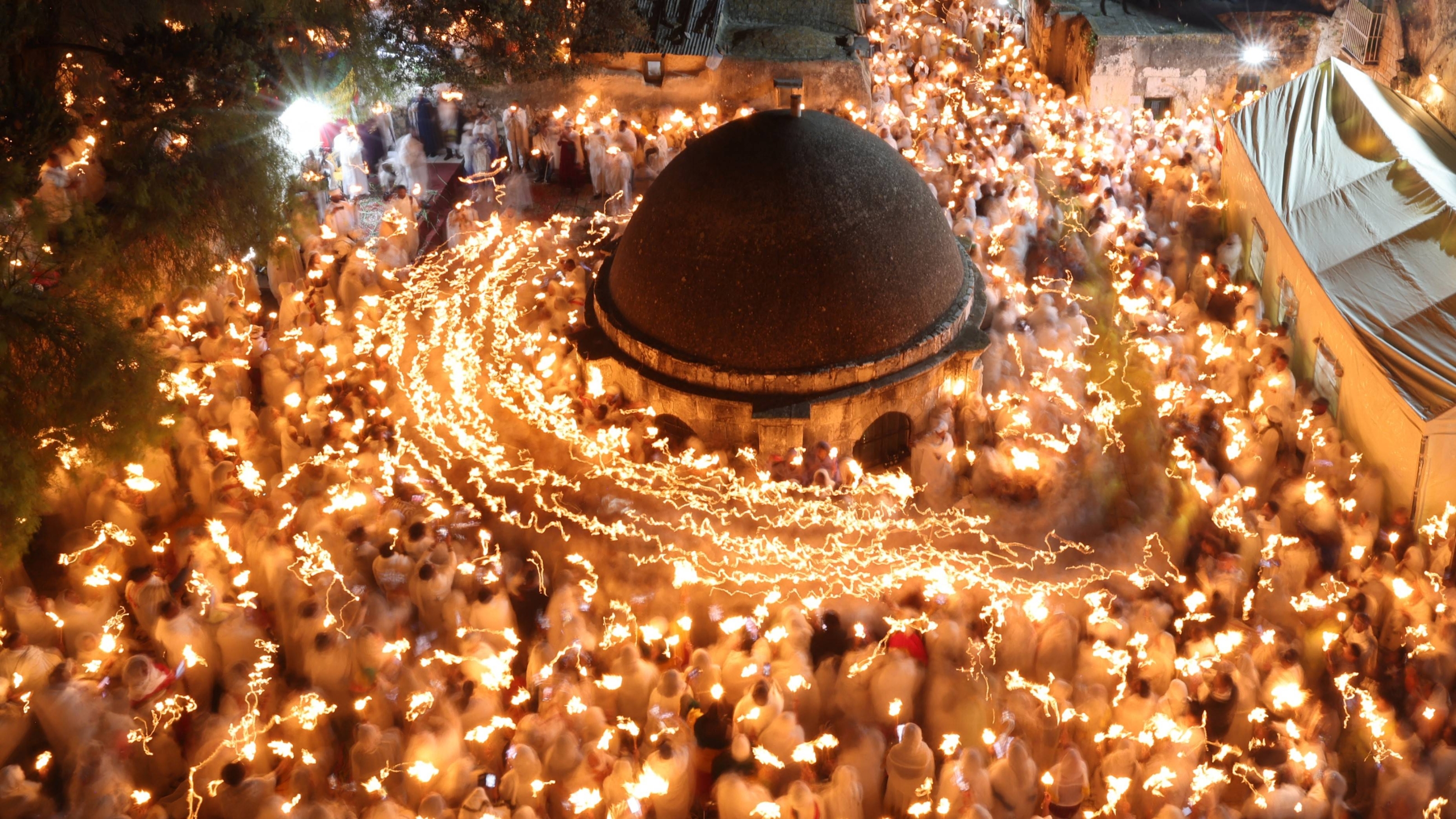
The Holy Fire: Orthodox Christians mark 'miraculous' tradition in Jerusalem

Every year on the Saturday before Orthodox Easter, Christians in Israeli-occupied East Jerusalem's Old City gather at the Church of the Holy Sepulchre to take part in the Holy Fire ritual. This year's event took place amid Palestinian criticism of Israel's heavy-handed treatment of Christian pilgrims trying to take part in Easter traditions.
Dating back to the second century, according to Christian sources, the tradition centres around a miracle at the tomb of Jesus, which is located within the building. The miracle involves the annual appearance of a blue light at the tomb that is said to spark a column of fire at the site. The Orthodox Patriarch uses this fire to light two candles, which are themselves used to light the candles and torches of others in attendance.
Candles lit by the flame are also sent out of Jerusalem to Orthodox countries, such as Greece and Russia. (Lead image: AFP/Ahmad Gharabli, Above image: AFP/Menahem Kahana)
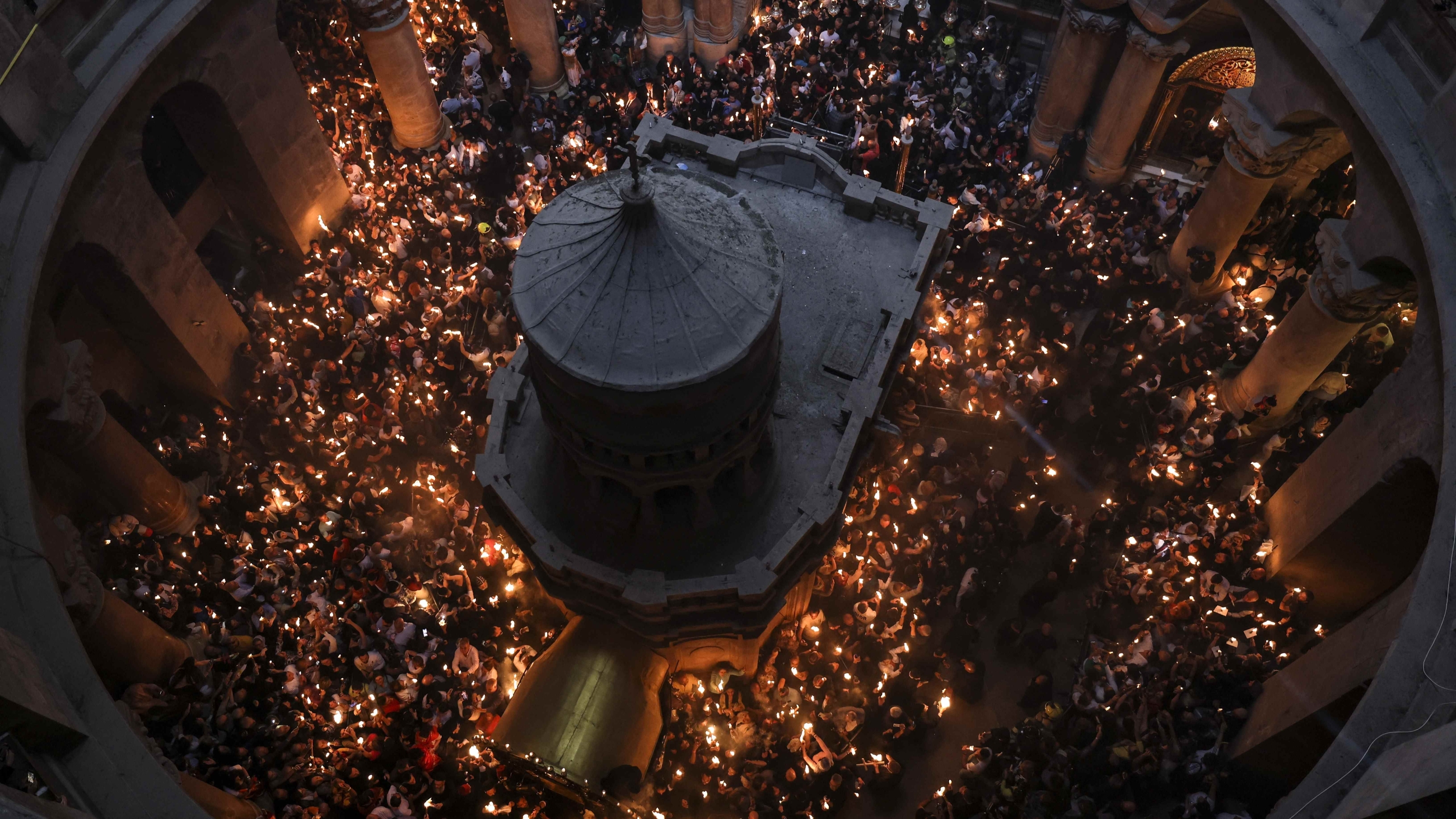
The fourth-century Christian writer Eusebius of Caesarea is said to have first mentioned the Holy Fire ritual. In his writings, the scholar and bishop recounts a second-century miracle at the site of the Holy Sepulchre, in which a bishop fills lamps with water after running out of lighting oil, but the lamps still produced a fire and light. (AFP/Ronaldo Schemidt)
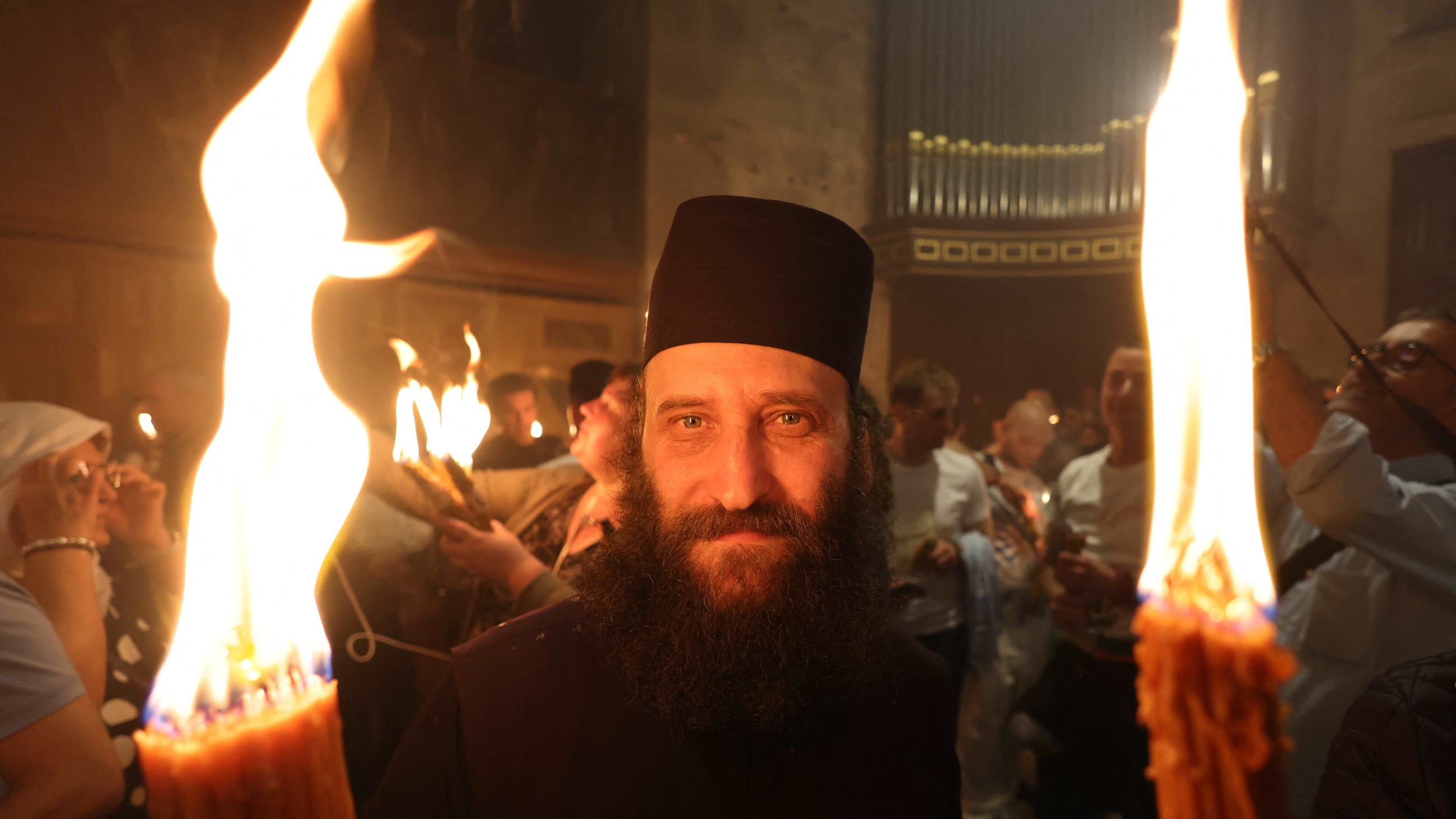
Most Orthodox churches celebrate Easter after Western denominations because they follow the Julian calendar instead of the Gregorian one preferred by the latter. Orthodox Christians also believe that Easter must be celebrated after Passover has ended because the crucifixion happened after Jesus had marked the Jewish holiday.
In 2023, Western churches marked Easter Sunday on 9 April and Orthodox Great Saturday took place on 15 April. Passover lasted between 5 April and 13 April. (AFP/Menahem Kahana)

While the ritual is led by the Greek Orthodox church, Christians from other non-Orthodox denominations also gather at the church in Israeli-occupied East Jerusalem. In the picture above, Christians gather around a candle to light their own candles. For the faithful, the miraculous appearance of the fire represents the resurrection of Christ after his crucifixion. (AFP/Ronaldo Schemidt)
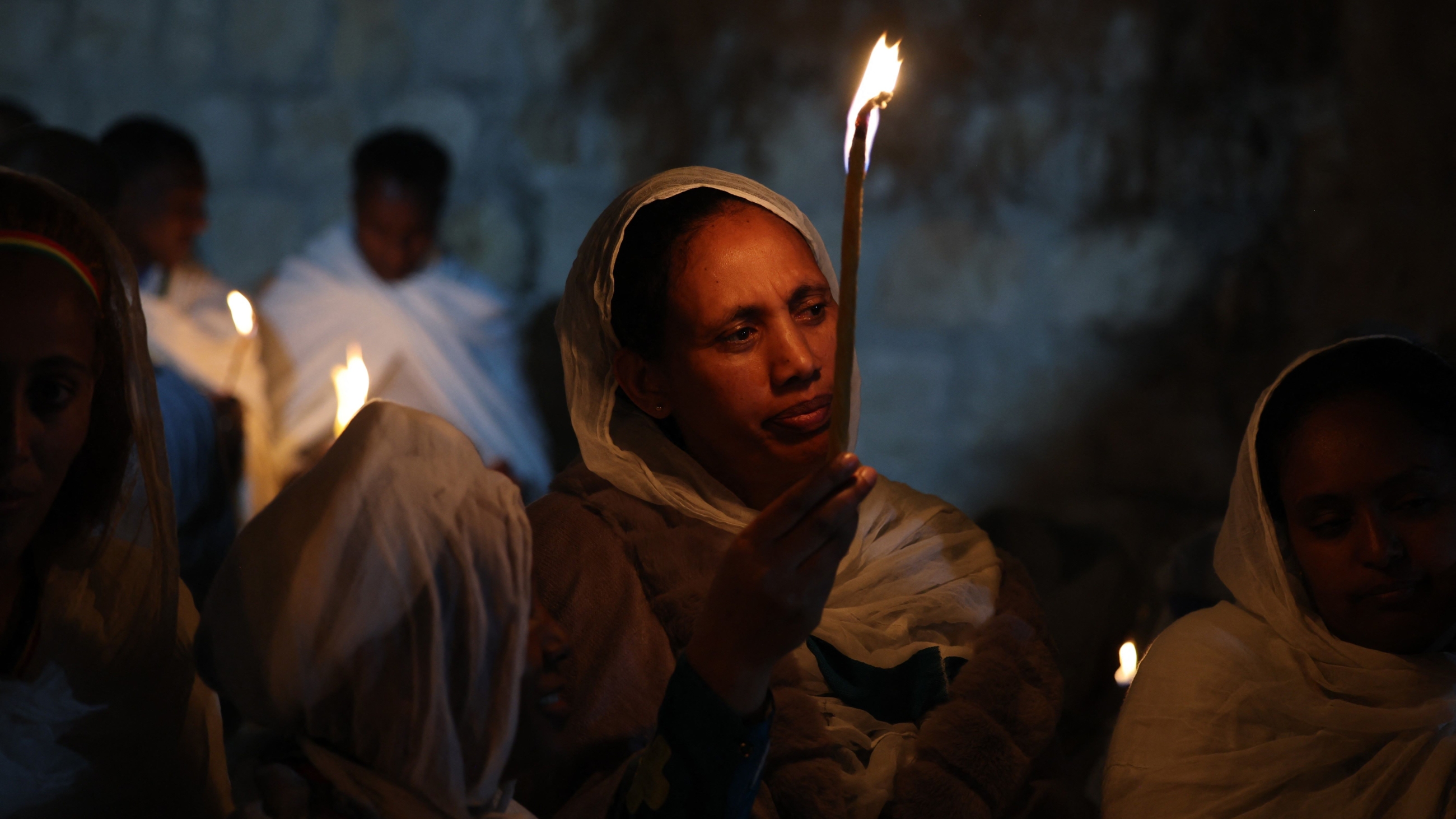
An Ethiopian Orthodox Christian pilgrim takes part in the Holy Fire ritual in Jerusalem on 15 April. Orthodox Christianity is the dominant form of Christianity in a number of countries, including Ethiopia, Egypt, Greece, Serbia, Ukraine and Russia, as well as several others.
There are also large communities in Middle Eastern countries, including Palestine. There are between 200 and 300 million Orthodox Christians worldwide. They differ from the Roman Catholic church on matters of ritual, church structure and certain theological positions. (AFP/Ahmad Gharabli)
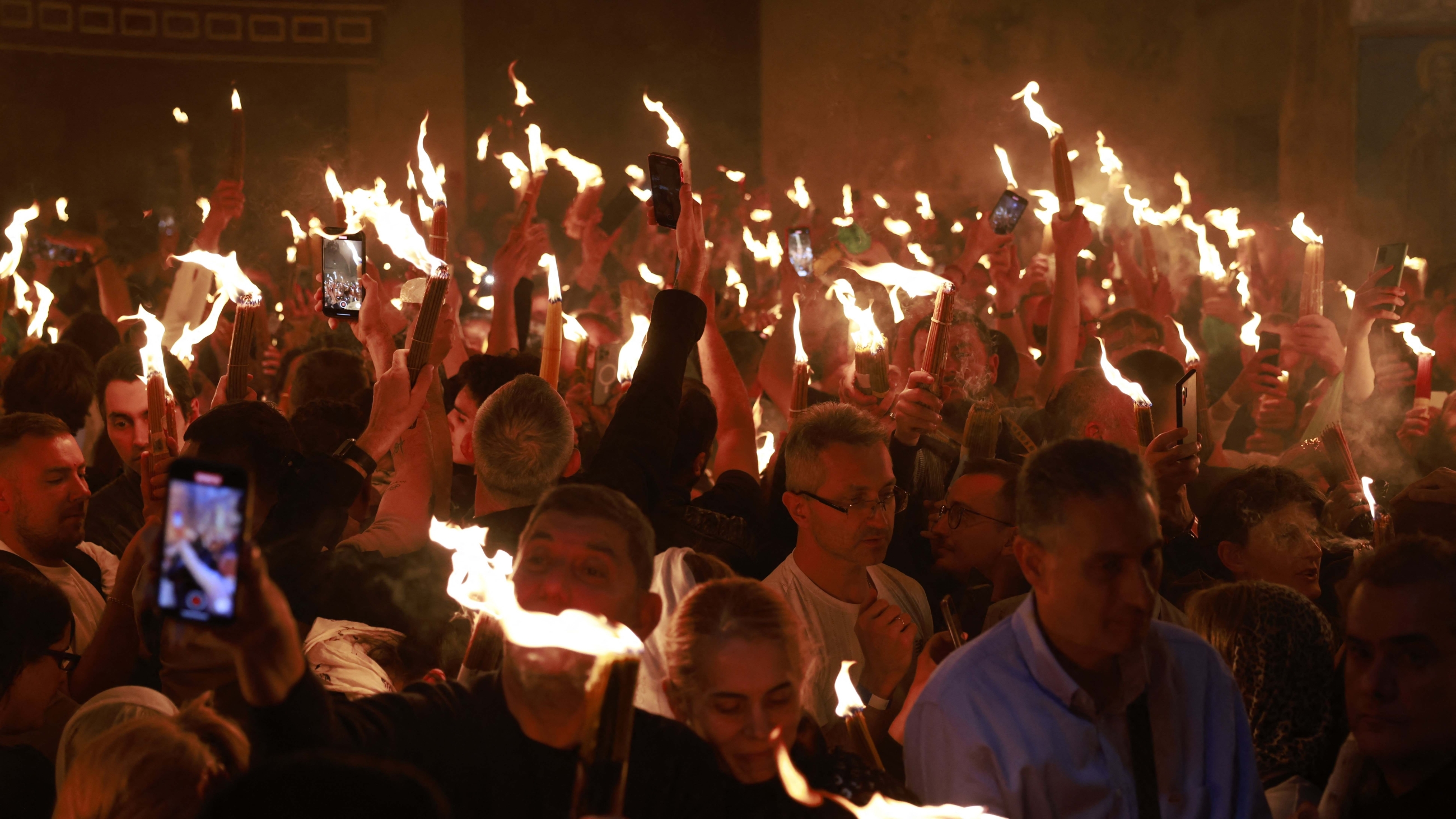
Christians partake in the Holy Fire ritual by raising their candles into the air at the Church of the Holy Sepulchre in Jerusalem's Old City. (AFP/Menahem Kahana)
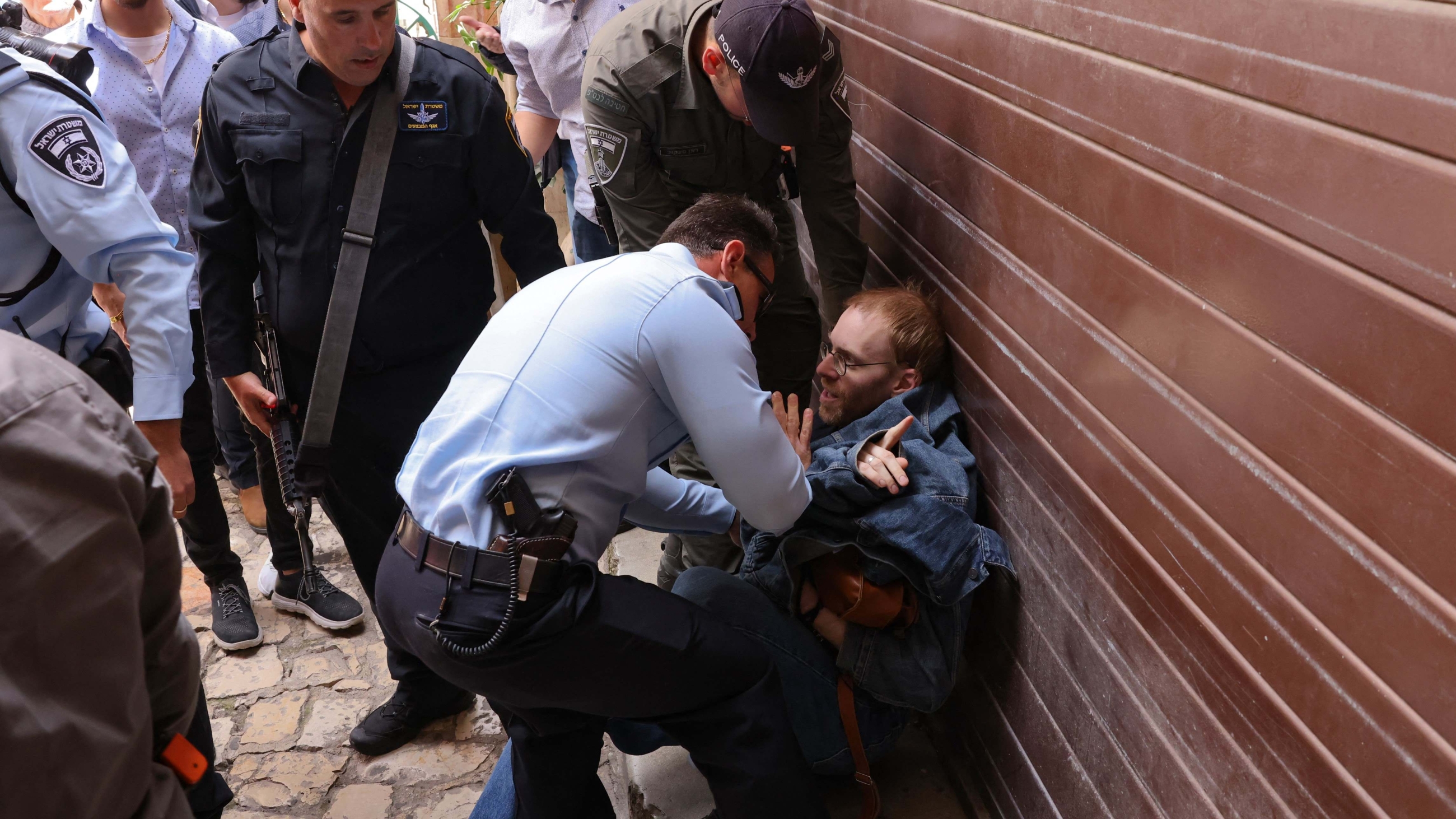
A Christian pilgrim is forced back by Israeli police after trying to enter the Church of the Holy Sepulchre in Jerusalem. This year, Israel allowed just 1,800 people to attend services inside the church and another 1,200 outside; in previous years, 10,000 people would take part inside the church.
As a result, crowds of Palestinian and foreign Christians gathered outside the area trying to get past Israeli cordons. Church leaders have condemned the "heavy-handed" decision to restrict the numbers of worshippers. (AFP/Ahmad Gharabli)
Middle East Eye delivers independent and unrivalled coverage and analysis of the Middle East, North Africa and beyond. To learn more about republishing this content and the associated fees, please fill out this form. More about MEE can be found here.



